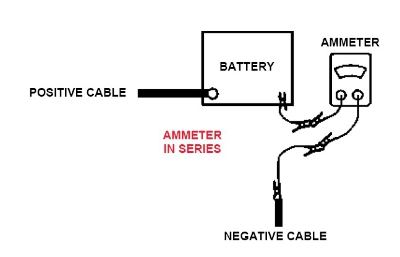Even something OEM could be malfunctioning.
The only way you are going to figure it out quickly is to get your voltmeter out, set it to amps mode, hook it up, and start pulling fuses one by one until you eliminate your parasitic drain.
1. Open the hood and disconnect the hood lamp, if equipped. Also, make sure all doors and trunk are closed.
2. Roll down your 2 front windows, OR...if you are going to be moving in and out of the cab, I would open both front doors, and strike down the latch (with a flathead screwdriver) to simulate the doors being closed. Just make sure to NOT let anyone close the doors without pulling on the exterior door handle first, hence releasing the latch open. Keeping the doors "closed" and the trunk closed helps in keeping the BCM asleep.
3. Definitely consult your owners manual for your specific voltmeter.
4. Set your voltmeter to amps mode and wire it in series with the negative battery as shown:

5. When initially hooking everything up, the BCM will be awake and draw a couple amps, but only for a short period of time. I go inside the house for 15 minutes (burger, beer, etc) and come back to read the voltmeter.
Normal is about .25-.35 amps.
Disclaimer: The following is a copy and paste from a GM TSB or bulletin, I don't remember which:
The battery run down time will vary depending on cold cranking amperage (CCA) and reserve capacity (RC). If the CCA and RC are higher, then the battery run down time would be longer. If the CCA and RC are lower, then the battery run down time would be shorter. The graph below indicates roughly how many days a 690 CCA battery with at 110 min. RC (60.5 AH) starting at 80 percent state of charge will last with a constant current draw until it reaches 50 percent state of charge. Differences in battery rating and temperature will affect the results.
Current Drain:-------------------Days:
25 mA-----------------------------30.5
50 mA-----------------------------16.5
75 mA------------------------------11
100 mA----------------------------8.25
250 mA-----------------------------3.3
500 mA(.5 amps)-----------------1.65
750 mA------------------------------1
1 A-----------------------------------0.8 (19 hours)
2 A-----------------------------------0.4 (11 hours)
End of Disclaimer
What is excessive? I personally would be bothered by anything at 100mA or higher, but then it would depend how much stuff you have installed. Amps, radios, CB's, satellite radios, radar detectors, etc...
6. If you have anything connected to your cig lighter, such as a Garmin or radar detector, reach thru the window (do NOT open any doors) and unplug it. Note how much your amps drop. If it is minimal, like 10mA, move on to other aftermarket items. This part can be ******, especially if you have items such as aftermarket stereo harnesses where the radio needs to be remove or dash/dash panels need to be un-installed first for access.
Next, the underhood fuse box. Just work your way systematically. Pull a fuse, note the drop in amps (if any), re-install fuse, move on to the next.
Sometimes pulling and re-installing a given fuse will wake up the BCM, temporarily spiking the amps up to 1-4 amps. You will just have to be a little patient and wait a couple of minutes for the final lowest reading. (Grab another burger and beer)
Repeat for the driver's side fusebox.
In the end, you are simply looking for the circuit that has the biggest drop, and that is your starting point.
If NO fuses cause any drops, I would check the alternator plug as well as going to individual harnesses, ie. HVAC harness, seat harness, Onstar harness Driver's Door module harness, etc. You would logicially assume that these areas would be illiminated by the pulling of fuses, but you never know! It's time consuming, but I definitely have more time than $$$.
Hope this helped some.

